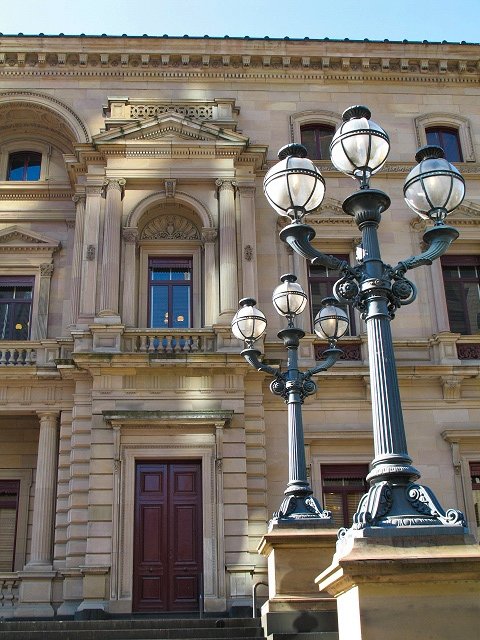#5171. Neo-Renaissance Façade with Classical Ornamentation and Historic Street Lighting
The image presents a fragment of a classical neo-Renaissance building with rich architectural articulation. The façade is made of light-colored sandstone or limestone, giving the structure a monumental and noble appearance. The composition of the façade is strictly symmetrical and hierarchical, with clearly expressed horizontal divisions between levels.
The ground floor is finished with rustication, creating an impression of reliability and solidity. The central entrance is highlighted by an arched portal with a wooden door in a rich brown color. The second floor features more refined treatment with pilasters and a developed entablature above the central part, which is accentuated by a decorative pediment. The windows on the second floor are adorned with casings and balustrades beneath the windowsills.
In the foreground of the image, a characteristic element of urban improvement from the historicism era stands out — an elegant multi-branched cast iron lamppost. This decorative street light with globular shades harmoniously complements the architectural ensemble, reminiscent of 19th-century urban design traditions.
The overall impression of the façade is one of austere elegance, characteristic of official buildings and important public institutions. The proportionality and precision of details testify to the high mastery of architects working in the classical tradition.
